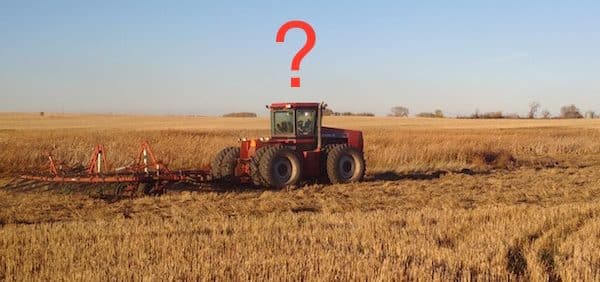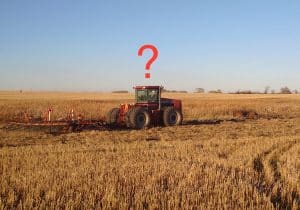Western Canada has made great strides in adopting minimum tillage practices that save time and diesel fuel, improve soils and improve sustainability scores. Here are factors to consider before choosing tillage:
Clubroot. This serious canola disease spreads primarily with the movement of soil. Tillage speeds up the movement of clubroot spores throughout a field and from field to field. If tillage is necessary on one field, be aware that clubroot spores may be present and the tillage tool should be cleaned of soil before leaving that field. Tillage also increases erosion, which research has shown increases clubroot spread via wind and water. Field and soil surveys demonstrate the continued spread of clubroot, especially in Alberta and Manitoba, so the chances of a field having clubroot keep getting higher.
Residue management. The combine spreader remains the single most important tool to provide an even spread of crop residue. Choosing varieties with shorter stem length also helps reduce residue. If further management is required, harrows will move less soil, which is good from a clubroot perspective in particular but also maintains many of the other min-till benefits.
Weeds. Herbicide-resistant weeds are an escalating concern, and glyphosate-resistant weeds are a real threat to minimum tillage. However, before going back to tillage to “save” this important min-till tool, consider tank mixing. Hitting weeds with multiple modes of action is effective at reducing the risk of selecting for resistant weeds. Other IPM tools include winter crops and higher seeding rates to improve crop competition. Light harrowing (instead of tillage) in the fall can stimulate germination of volunteer canola and other annuals so they are winter-killed. Even better, just leaving volunteer and weed seeds on the soil surface also allows them to be eaten by rodents, birds and insects.
Soil-incorporated herbicides. While these do introduce new modes of action into the herbicide mix, which is a good resistance-management step, look for active ingredients and formulations within this class that do not actually require tillage to incorporate them.
Moisture management. Tillage might help dry out wet soils, but tillage can also increase soil compaction, which destroys the water filtration channels that may help sloughs drain away naturally. And if soils are wet this fall, will they be wet next spring? It was a dry year for the Prairies, generally speaking, and if 2016 starts out the same way, the extra moisture in no-till fields may be the difference maker. Moisture retention has been a hallmark of minimum tillage.
Nutrient management. Long-term no till studies at Indian Head Agricultural Research Foundation in Saskatchewan (to give one example) show that the longer soils are in no-till, the better they are at cycling and providing nitrogen throughout the growing season.
Erosion control. Tillage increases erosion and reduces organic matter. Soils are healthier under zero till.
Customers want you to preserve the soil. A United Nations soil scorecard ranked Canada very high, largely due to our widespread adoption of zero tillage over the past generation. Sustainability scorecards that many big end users are adopting also look at soil protection practices. Bringing back tillage is a step backward for these important benchmarks.

